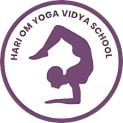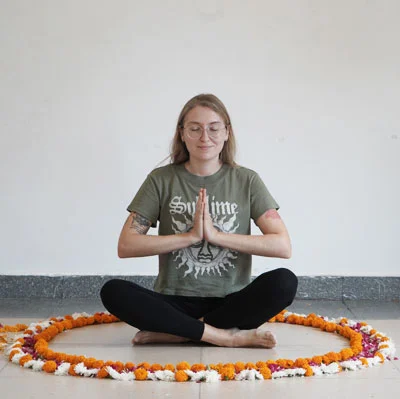Introduction – The Role of Pranayama in Yoga and Teacher Training
Pranayama is not just a breathing technique; it’s one of the core pillars of yoga. In traditional yogic systems, the breath is viewed as the bridge between the body and the mind. When you learn to control your breath, you begin to control your inner state. That’s why pranayama holds such a deep role in both personal yoga practice and in yoga teacher training programs.
In teacher training, especially in immersive courses like those in Rishikesh, pranayama becomes more than a morning ritual. It teaches you how to tune into your energy, sharpen your focus, and maintain balance even during physically demanding asana practice. Whether you’re pursuing a 100-hour or a 200-hour yoga teacher training course in Rishikesh, India, pranayama brings an added layer of depth to the experience. It helps yoga teachers develop an inner clarity that translates to their teaching presence. And as you’ll discover in this blog, pranayama isn’t just “included” in teacher training, it’s an essential ingredient in becoming a complete yoga practitioner and instructor.
What Is Pranayama? Understanding the Yogic Science of Breath
So what is pranayama in yoga, really? The word comes from Sanskrit: “Prana” means life force or vital energy, and “Ayama” means expansion or control. When we practice pranayama, we’re not just taking deep breaths, we’re learning to consciously regulate the flow of energy in the body.
Read More: Why Is Kundalini Yoga Dangerous? The Truth About Its Risks and Rewards
This is done through a combination of breath control techniques that involve inhalation (puraka), retention (kumbhaka), and exhalation (rechaka). These breath patterns work to purify the nadis (energy channels), stabilize the nervous system, and open the gateway to meditation. In ancient yogic philosophy, pranayama is the fourth limb of yoga, right after asana and just before dharana (concentration). That tells us just how critical this practice is, not only for our physical health but also for our mental and spiritual well-being.
Is Pranayama Included in All Yoga Teacher Training Courses?
The short answer is, it depends on where you train. While many modern yoga teacher training programs include a basic introduction to pranayama, the depth of that teaching can vary widely. Some 100-hour or 200-hour yoga TTCs might offer pranayama as a daily warm-up with limited explanation. Others, especially those rooted in the traditional schools of Rishikesh, teach pranayama as a full module, combining theory, practice, and teaching methodology.
At Hari Om Yoga Vidya School, for instance, pranayama isn’t just a checkbox in the schedule, it’s woven into every day. You don’t just learn how to do it; you learn why it works, when to practice specific techniques, and how to teach pranayama safely to others. So if you’re serious about learning the full scope of yoga, choose a course that includes pranayama in its true form, not just as a side dish but as a main offering.
Why Pranayama Is a Vital Part of a Well-Rounded Yoga TTC
Without pranayama, a yoga teacher training course feels incomplete. That’s because yoga isn’t just about the body, it’s about the energy and awareness behind every movement. Pranayama sharpens that awareness. It enhances concentration, boosts vitality, and deepens the meditative aspects of practice.
When students train in pranayama from the beginning, they gain tools to manage their energy levels, support their voice while teaching, and keep calm under pressure. These are skills you can’t build through asanas alone. In fact, many graduates say that their understanding of yoga only became complete when they truly grasped the impact of breath on their state of being. So if you’re asking whether pranayama should be part of a yoga TTC the answer is a strong yes.
Key Benefits of Practicing and Teaching Pranayama
The benefits of pranayama go far beyond better lung capacity. Regular practice strengthens your immune system, balances your emotions, and supports a peaceful mind. On a physiological level, pranayama improves oxygenation and helps detoxify the body. Mentally, it acts like a reset button, helping you let go of scattered thoughts and nervous tension.
From a teacher’s perspective, knowing how to teach pranayama makes your classes more holistic. You can help students who struggle with anxiety, fatigue, or restlessness by guiding them through breathwork that aligns with their needs. You also create a richer classroom environment, where energy isn’t just burned, it’s directed and refined. This is why so many yoga teacher training graduates say pranayama was their biggest takeaway.
How to Learn and Teach Pranayama with Confidence
Learning pranayama is one thing. Teaching it is another. In your yoga TTC, you should ideally learn pranayama through a progressive system, starting from basic techniques like Nadi Shodhana (alternate nostril breathing) and gradually advancing to more subtle practices like Bhramari, Ujjayi, or Kapalbhati. But beyond the techniques, you also need to learn how to cue breath properly, adjust for different health conditions, and explain the purpose behind each exercise.
This is where good mentorship matters. A well-structured 100-hour or 200-hour yoga teacher training in Rishikesh will not only teach pranayama techniques but also offer teaching labs, feedback, and theoretical context. That way, when you guide your future students, you do so with clarity, care, and confidence.
Styles of Yoga TTC That Focus More on Pranayama
Kundalini Yoga Teacher Training – Emphasis on Breath and Energy
Kundalini yoga puts pranayama front and center. Breath is used not just for relaxation but for awakening dormant energy at the base of the spine. If you join a 200-hour Kundalini yoga teacher training in Rishikesh, expect to practice powerful techniques like Breath of Fire, Kundalini Kriyas, and Sitali Pranayama daily. These techniques are transformative but should always be taught under proper guidance.
Traditional Hatha Yoga – Deep Breath Control as Foundation
In Hatha yoga TTCs, pranayama is approached as a foundational practice. It’s taught slowly and methodically, often paired with mudras and bandhas to harness energy. This style respects the classical texts and gives students a grounded understanding of breath as the bridge between asana and meditation.
Multi-Style TTC – Exposure to Diverse Pranayama Approaches
Multi-style yoga teacher training programs give students a taste of different pranayama traditions. From the dynamic breath of Vinyasa to the meditative focus of Hatha and Kundalini, you get to experience how each style integrates breath differently. This variety helps you decide which tradition aligns best with your future as a teacher.
Read More: Everything You Need to Know About Kundalini Yoga Teacher Training
Conclusion – Pranayama Is Not Optional, It’s Essential
Pranayama isn’t just another technique to tick off during yoga teacher training. It’s a core part of the yogic path, a transformative practice that changes how you breathe, think, feel, and live. Whether you’re choosing a 100-hour or 200-hour yoga teacher training in Rishikesh, make sure pranayama isn’t left as an afterthought.
When you train in pranayama, you unlock tools to balance your energy, deepen your meditation, and stay grounded no matter what. You also become a more complete teacher, one who can guide others not just through movement, but through breath and stillness. So if you’re looking to join a program that honors the full spectrum of yoga, choose one that teaches pranayama with depth, wisdom, and daily dedication. Because in the journey of yoga, your breath leads the way.
Deepen Your Yoga Practice with Hari Om Yoga Vidya School
Located in the heart of Rishikesh, Hari Om Yoga Vidya School is a place where ancient yogic wisdom meets modern teaching techniques. As a top yoga school in Rishikesh, we are committed to providing authentic, immersive yoga education in a peaceful, spiritual setting. Recognized as one of the best yoga schools in Rishikesh, we offer structured training programs designed to help you evolve in your practice, whether you are a beginner or an experienced yogi.
If you’re searching for a yoga school in Rishikesh that focuses on holistic learning, experienced teachers, and a supportive community, look no further!
Explore Our Yoga Teacher Training & Retreats
At Hari Om Yoga Vidya School, we offer a range of courses tailored for different levels of practitioners:
✅ 100-Hour Yoga Teacher Training in Rishikesh – A foundational course for those looking to begin their yoga journey.
✅ 200-Hour Yoga Teacher Training in Rishikesh – An internationally recognized certification for aspiring yoga teachers.
✅ 300-Hour Yoga Teacher Training in Rishikesh – Advanced training to deepen your practice and refine your teaching skills.
✅ 7-Day Yoga Retreat in Rishikesh – A rejuvenating escape into yoga, meditation, and self-discovery.
✅ 10-Day Yoga Retreats in Rishikesh – A transformative experience that blends yoga, relaxation, and Himalayan serenity.
Join us for a life-changing experience and become part of our global yoga family! 🌿✨



